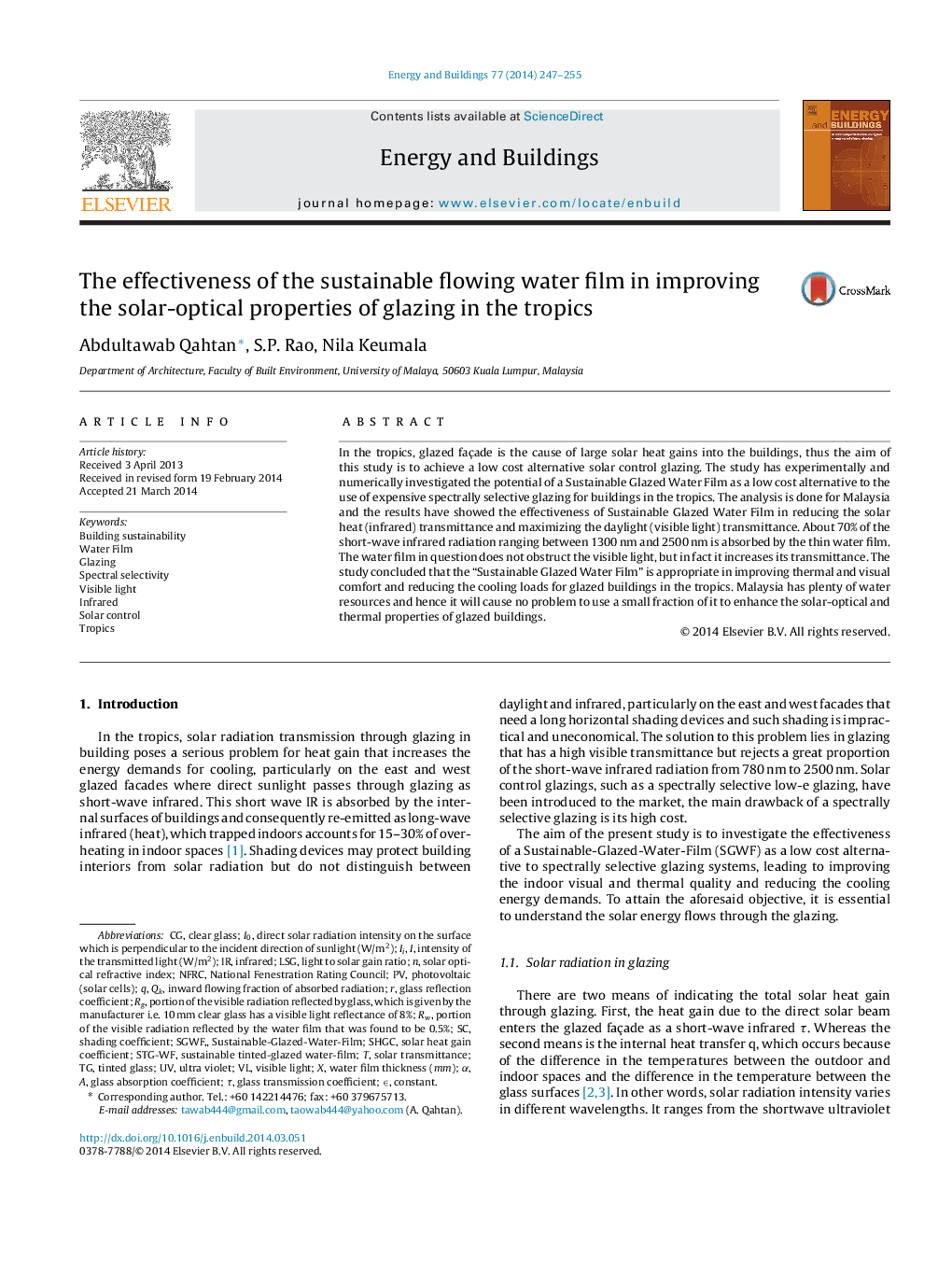| Article ID | Journal | Published Year | Pages | File Type |
|---|---|---|---|---|
| 6733660 | Energy and Buildings | 2014 | 9 Pages |
Abstract
In the tropics, glazed façade is the cause of large solar heat gains into the buildings, thus the aim of this study is to achieve a low cost alternative solar control glazing. The study has experimentally and numerically investigated the potential of a Sustainable Glazed Water Film as a low cost alternative to the use of expensive spectrally selective glazing for buildings in the tropics. The analysis is done for Malaysia and the results have showed the effectiveness of Sustainable Glazed Water Film in reducing the solar heat (infrared) transmittance and maximizing the daylight (visible light) transmittance. About 70% of the short-wave infrared radiation ranging between 1300Â nm and 2500Â nm is absorbed by the thin water film. The water film in question does not obstruct the visible light, but in fact it increases its transmittance. The study concluded that the “Sustainable Glazed Water Film” is appropriate in improving thermal and visual comfort and reducing the cooling loads for glazed buildings in the tropics. Malaysia has plenty of water resources and hence it will cause no problem to use a small fraction of it to enhance the solar-optical and thermal properties of glazed buildings.
Keywords
Related Topics
Physical Sciences and Engineering
Energy
Renewable Energy, Sustainability and the Environment
Authors
Abdultawab Qahtan, S.P. Rao, Nila Keumala,
